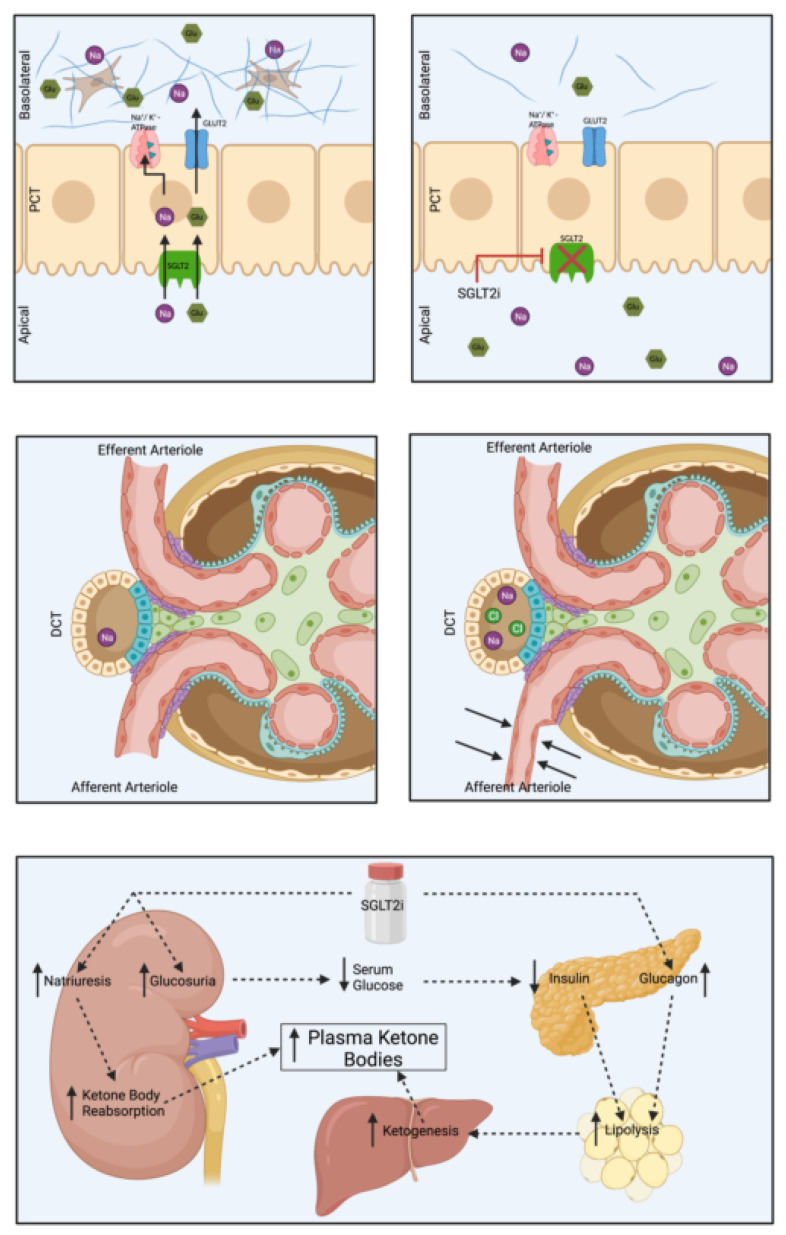Figure 3.
Visual representation of the mechanism of action of sodium glucose transport protein 2 (SGLT2) inhibitors. Top: Under normal circumstances (left), sodium and glucose are both reabsorbed by SGLT2 to enter the proximal tubular cell. The sodium then gets to the basolateral side of the proximal convoluted tubule (PCT) through the sodium–potassium exchanger, while glucose utilizes GLUT2 to exit the PCT cell. The presence of excessive glucose on the basolateral side of the PCT cell results in increased extracellular matrix production and fibrosis. Inhibiting SGLT2 will result in decreased sodium and glucose in the interstitial space (right), resulting in decreased extracellular matrix production and fibrosis. Middle: Blockade of SGLT2 results in increased sodium and chloride delivery to more distal portions of the nephron. This increased sodium and chloride is sensed by the macula densa, resulting in tubule-glomerular feedback which causes renal afferent arteriolar vasoconstriction. This vasoconstriction will decrease glomerular filtration and glomerular hypertension. Bottom: SGLT2 inhibitors will increase the production of plasma ketone bodies. The natriuresis caused by SGLT2 inhibitors will decrease the excretion of these plasma ketone bodies in the urine. These ketone bodies are preferentially oxidized over free fatty acids which play a role in a decreased oxidative stress on the kidneys and heart.

